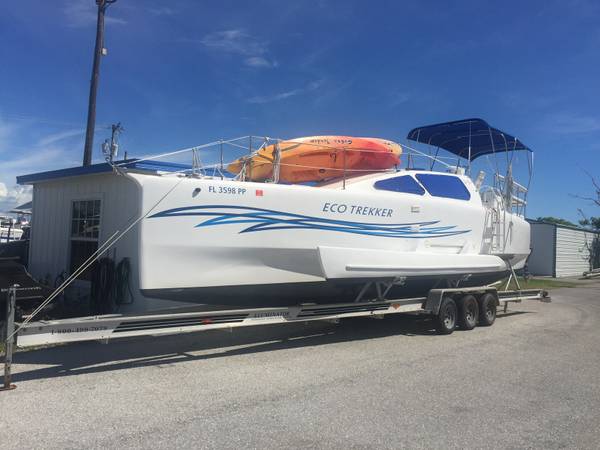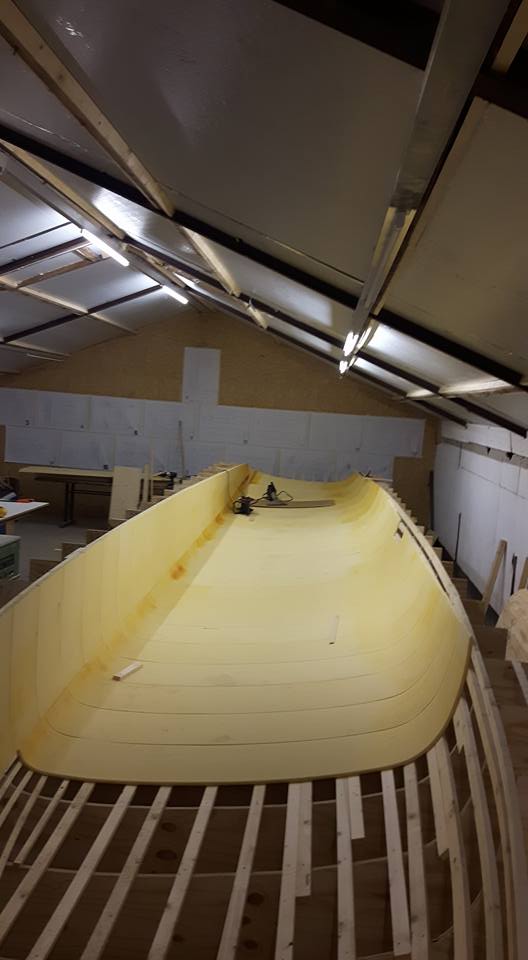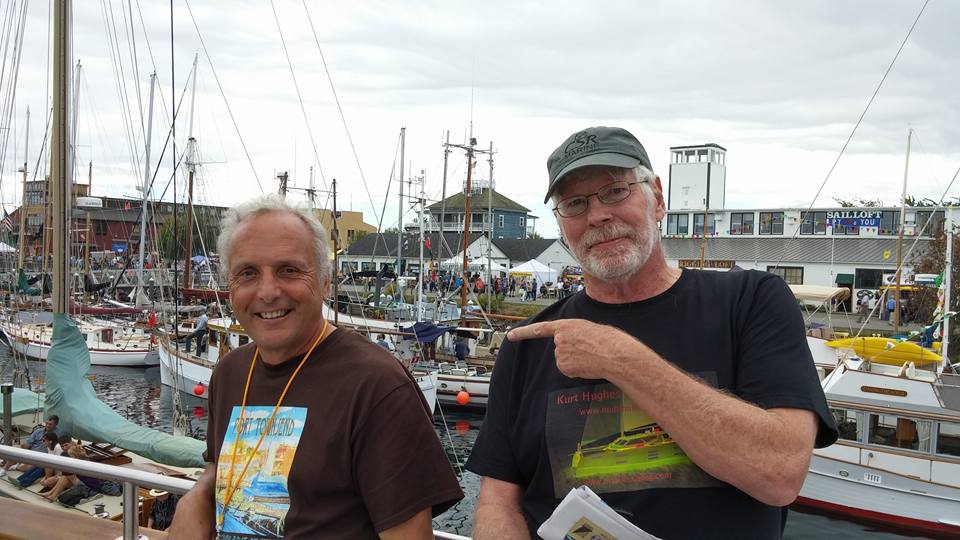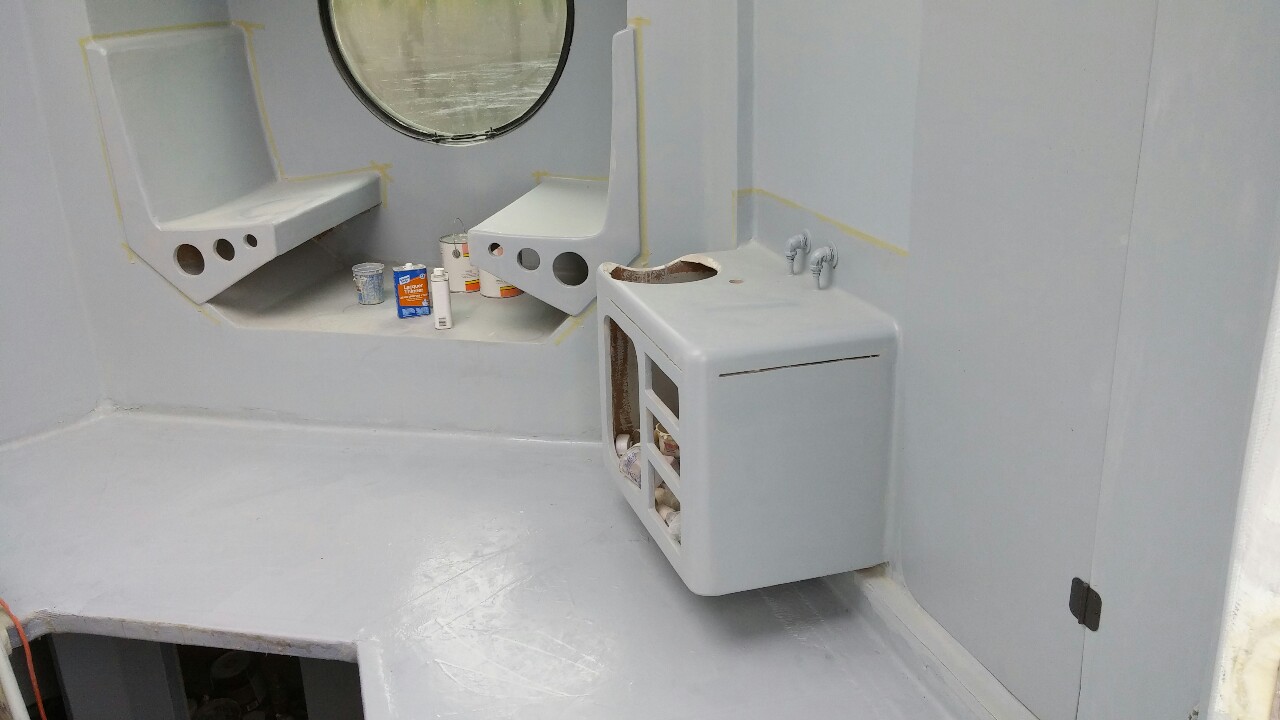Wood Boatbuilding Fusion
Some time ago I was invited to give a lecture to the Seattle Central Community College school of wooden boat building.
I advisd them that their futures were not in steamed knees and nuances of refastening a hull. I told them that the future of wood boatbuilding was in fusing wood/epoxy technology with composite technology. Together they offered advantages that neither can separately
I don’t know if they were impressed, but some of my fusion samples never made it back to me. I guess that is good.
Wood and plywood have many advantages that many composites don’t have. Woods, for example, have a fatigue strength that is only matched by carbon fiber and is more than double that of E glass. After some 10 million use cycles, plywood and carbon have about 50% of the strength they started with. E-glass has about 22% of the strength that it had initially.
Plywood has an industrial smooth surface finish that composites can only achieve after hours of finsh work or a large bagging table. It comes that way right out of the factory. One should try to use those advantages given by the economy of mass production wherever possible.
A fusion composite part probably will not need a mold. The plywood appearance face can form the part. When I built the composite lunar lander, if I would have had a big budget, I might have infused the parts with triaxial roving and pvc or sen core. I would have needed molds or at least a bagging table. I did not have the budget so I vacuum bagged my own SIP panels by vacuum bagging ply faces onto foam core.
By itself wood or plywood is too heavy to be efficient against out of plane loads or to be restrained against global loads. Composite cores like pvc, sen, or balsa can make a very strong panel by bagging the core to the plywood and in turn, bagging more plywood or composite fabric onto the opposite face. The result can resist out of plane loads and or, restrain a structure against global loads at much much less weight than a solid plywood or even plywood and stringers can do.
All wood used as an engineering material must be encapsulated in epoxy. That not only improves the wood’s mechanical properties, but it protects it against moisture and rot. The epoxy also becomes the bond with the core and or fabric that is used. Epoxy is also much easier to get right, especially if the temperature of the workspace changes during the day. Polyester or vinylester initiators and catylists must be mixed accurately to often fractions of a per cent. And that measure must change as a function of temperature. I always say that you can be almost brain dead and still get epoxy right.
Plywood has extra benefit from combining with carbon fiber. Plywood and carbon fiber both have a stretch to failure of about 1%. They work very well together. In comparison, E-glass has a stretch to failure of about 5% to 6%. So if the combined part of plywood and E-glass is loaded to failure, the plywood will fail while the glass is onIy contributing about 20% of its strength. I have seen plans of catamarans by famous multi designers, who charge much more than I do, who design beams with plywood and E-glass combined. With enough glass, it works, but is very inefficient. And I remember one set of plans I saw with something like 20 layers of e-glass uni was called for. The schedule not only had no cross laminates, but the contact surface with the plywood was minimal. Those each are a failure waiting to happen. Combined? Wow.
E-glass does have a place with fusion products, but not against global loads. Glass cloth is great at providing damage protection and a vapor barrier for plywood. Glass cloth or biaxial roving are ideal for joining parts where global loads are not involved. The extra give that glass has can do very well to prevent the energy of crack initiation on a plywood free edge. Like a ripstop.
Ideally the carbon fiber is vacuum bagged to the plywood with the warp in the same direction as the plywood 0 degree. In general you can replace about 10 thicknesses of plywood by one thickness of carbon fiber, for bending strength. Note that many other factors enter in, but in general that’s true.
Plywood, lumber and composites combined can create products that are synergistically better than the different parts that were combined. Fusion.






